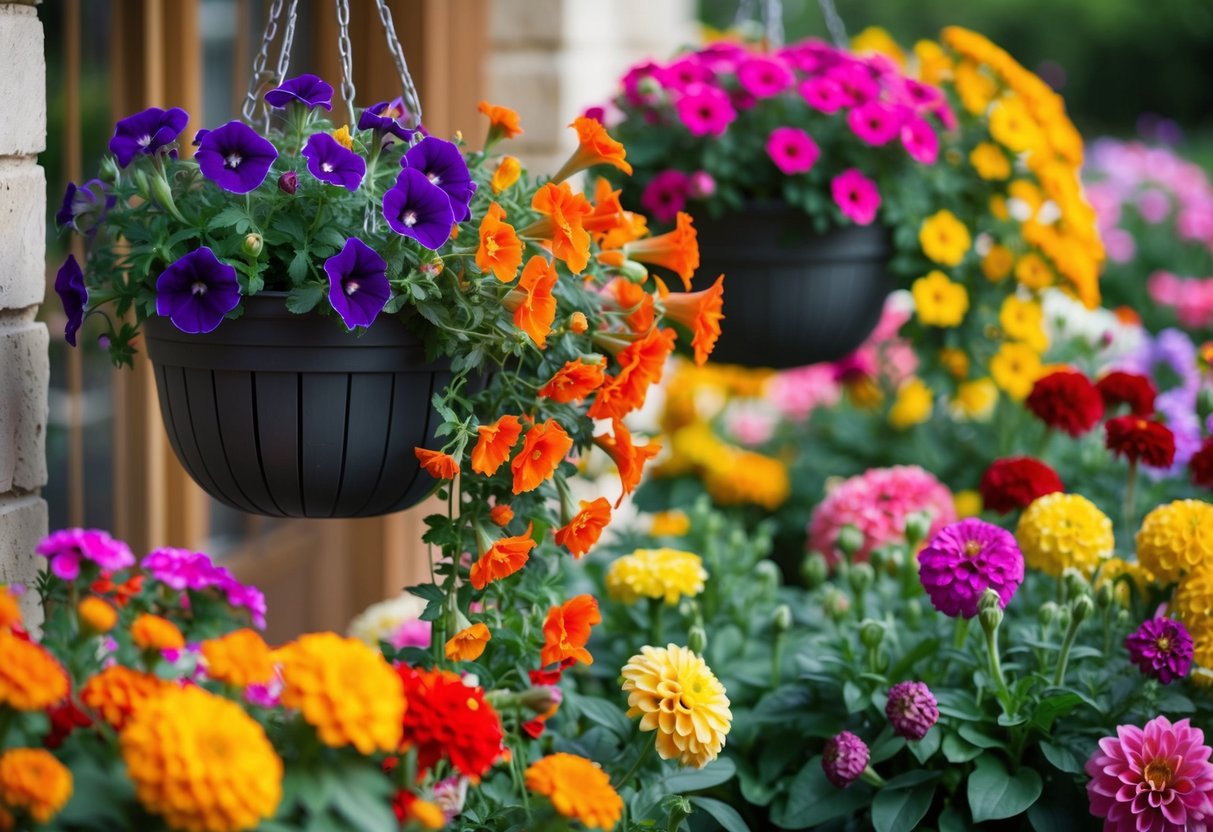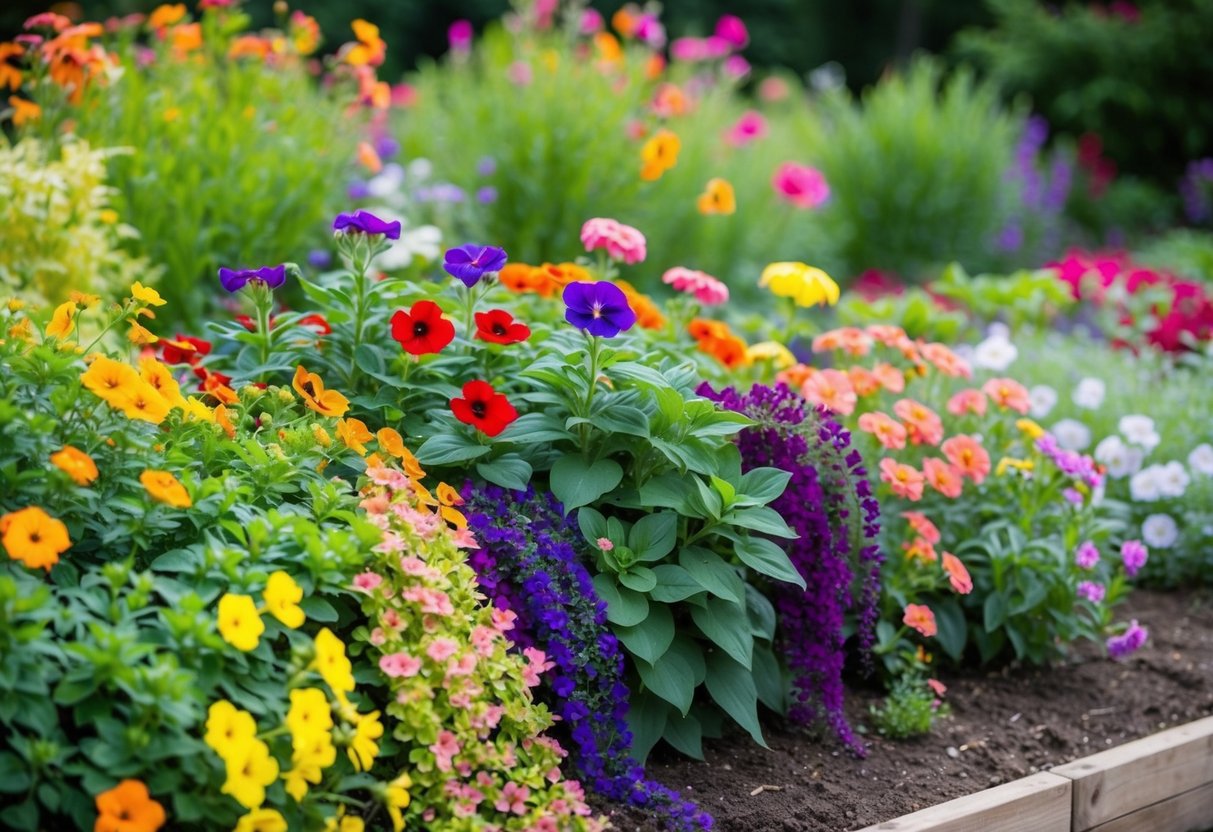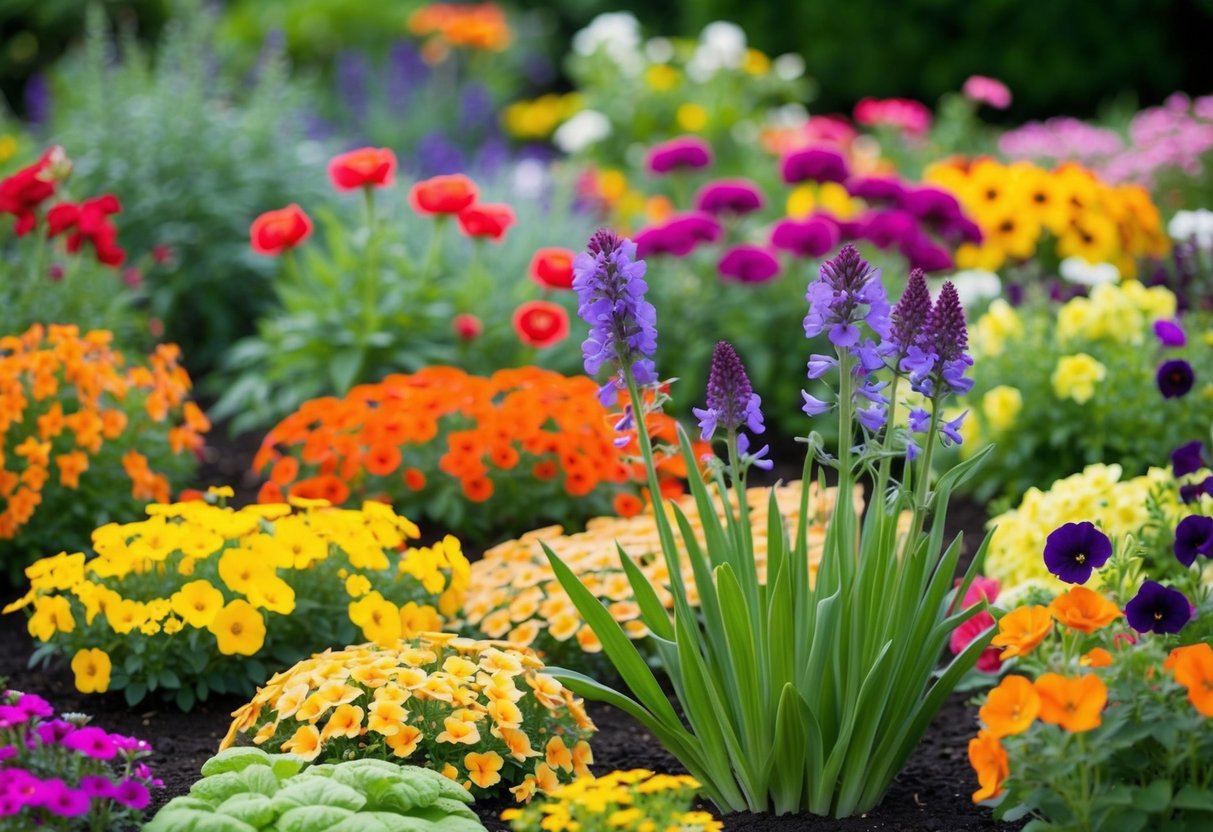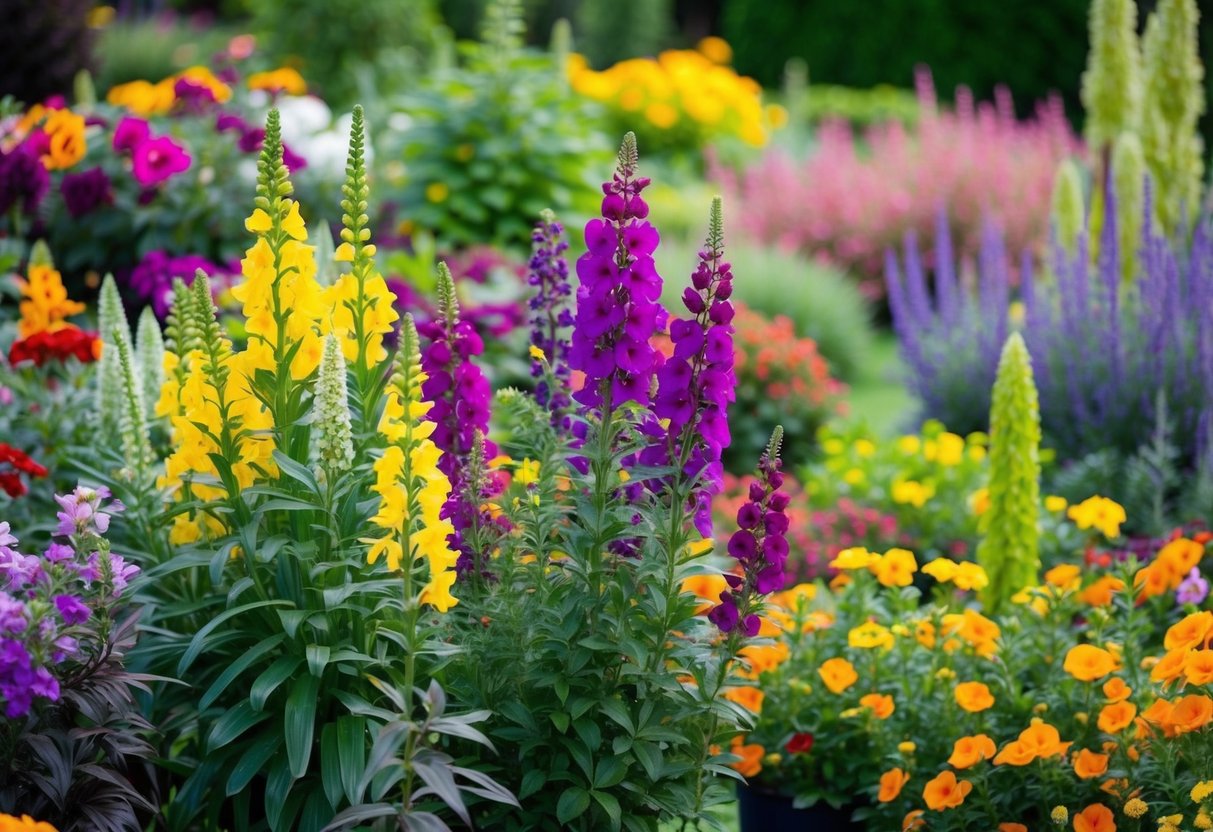What Summer Bedding Plants Flower the Longest? Tips for a Vibrant Garden
Are you looking to brighten up your garden this summer with vibrant and long-lasting blooms? Summer bedding plants can transform your outdoor space into a colorful oasis. The right choices can keep your garden dazzling throughout the summer season and even into early fall.

Garden phlox is one of the best options you can consider, as it blooms profusely from summer to early fall with stunning colors like pink, rose, and white. If you’re interested in height and fragrance, you might want to think about planting Nicotiana sylvestris, which can grow tall and add a pleasant aroma to your garden. Just imagine relaxing in your garden on a warm evening, surrounded by such beauty.
Another popular option is geraniums, which are known for their robustness and lengthy blooming period, lasting from late spring all the way to the first frosts. Plus, geraniums don’t require a lot of water, making them easy to care for. To create eye-catching displays, consider mixing these with other bedding plants like petunias or sweet peas. Not only will you enjoy their beauty, but you’ll also have a garden filled with colors that will impress anyone who visits.
Choosing the Right Summer Bedding Plants

When picking summer bedding plants, it’s essential to think about whether you want perennials or annuals and how your local climate and soil can affect your choices. This way, you can ensure vibrant blooms throughout the season.
Perennials vs Annuals
Perennials are plants that live for more than two years, coming back season after season. They might take a bit more time to establish, but they can be a solid long-term option in your garden. Common perennials include sedum and echinacea.
Annuals, by contrast, complete their life cycle in one growing season. They tend to bloom more profusely than perennials. Popular choices for summer include petunias and geraniums, which offer vibrant color but require annual planting.
Consider mixing perennials with annuals to maintain visual interest in your garden. This combination provides continuous blooms and steady garden development throughout the year.
Assessing Climate and Soil Needs
Climate and soil type play crucial roles in choosing the right plants. Some plants thrive in warm, sunny climates, while others prefer shade and cooler temperatures. Check which plants are best suited for your zone.
Soil type is equally important. Well-drained soil is ideal for most bedding plants as it prevents root rot and allows plants to grow healthy. If your soil is acidic, consider plants like azaleas. On the other hand, lavender thrives in alkaline soil.
Testing your soil pH level and adjusting it accordingly can help ensure your plants stay healthy and vibrant. Take these factors into account, and you’ll find bedding plants that flourish in your garden environment.
Most Popular Long-Flowering Bedding Plants

You can create a vibrant garden filled with color all summer long by choosing plants that are known for their extended blooming periods. Here, you’ll learn about popular options like geraniums, petunias, marigolds, and begonias.
Geraniums and Pelargoniums
Geraniums, often known as pelargoniums, are a favorite for summer gardens. These plants are not only robust but also bloom continuously from late spring until the first frosts. You can enjoy a variety of colors, from reds to pinks and whites.
A great thing about geraniums is that they don’t require constant watering to thrive, making them ideal if you prefer low-maintenance plants. Place them in sunny spots for best results. Their long flowering season makes them a reliable choice if you’re looking for consistent color.
Petunias for Prolific Blooms
Petunias are known for producing a profusion of blooms throughout the entire summer. Available in many vibrant shades, they can easily fill gardens, hanging baskets, and window boxes with a burst of color.
These flowers are easy to grow and care for, making them perfect if you’re looking to brighten up your outdoor spaces without much hassle. Though they’re not the most drought-tolerant, regular watering and some feeding will keep petunias blooming strongly. Their stunning display and variety in colors make them a stand-out option in any garden.
Reliable Marigolds and Begonias
Marigolds are popular bedding plants because of their warm tones and ability to flower all summer. These plants are often used to create a golden carpet in sunny garden spots or borders. Their strong scent can also help repel pests.
Begonias are another excellent choice, offering bright blooms from summer into autumn. While begonias are not safe if you have pets, as they can be toxic, they’re perfect for brightening any garden area. Both marigolds and begonias contribute to a garden that keeps flowering, ensuring you have a continuously lively outdoor space.
Care Tips for Continuous Blooms

To keep your summer bedding plants flowering for as long as possible, focus on watering, feeding, and proper maintenance. Paying attention to these areas will ensure your plants stay healthy and vibrant through the entire season.
Watering and Feeding Requirements
Proper watering is crucial for summer bedding plants. Most plants require consistent moisture, especially in containers. It’s best to water in the early morning or late evening to prevent too much evaporation. If your plants are in containers, they might need watering more often since containers dry out quickly.
Feed your plants regularly to support their growth and blooms. Use a balanced, water-soluble fertilizer every two weeks. This provides essential nutrients and encourages continuous flowering. Be careful not to overfeed, as this can lead to weak growth and fewer blooms.
The Importance of Deadheading
Deadheading is an important practice to keep your plants blooming. By removing faded or dead flowers, you encourage the plant to produce more blooms instead of going to seed. Use small scissors or your fingers to nip off the spent flowers just above the first set of healthy leaves.
This simple task helps redirect the plant’s energy into creating new buds. In addition, deadheading keeps your plant looking tidy and prevents diseases that can occur from decaying petals. Regular maintenance also keeps you in tune with your plant’s health, making it easier to spot any issues early.
Designing with Long-Flowering Plants

When planning your garden, consider long-flowering plants to keep your outdoor space vibrant. You can create stunning displays by incorporating these plants into your flower beds and using them in creative ways like containers and hanging baskets.
Creating Eye-Catching Flower Beds
Design your flower beds with a mix of long-flowering perennials for a burst of color that lasts. Use plants like coneflowers or Black-eyed Susans to cover your ground effectively.
It’s helpful to mix different heights and textures. Place taller plants like hollyhocks at the back and shorter ones such as ground covers at the front. This ensures all flowers are visible. Additionally, combine various colors for contrast to make your flower beds stand out even more.
Additionally, consider the needs of each plant, like sun exposure and water requirements. Grouping plants with similar needs will make care easier and support healthy growth. This thoughtful planning will help your flower beds look lush and lively throughout the season.
Using Containers and Hanging Baskets
Containers and hanging baskets are great for adding flexibility and charm. Use patio containers filled with long-blooming plants like geraniums and petunias for colorful displays. These plants thrive in containers and can brighten up patios or balconies.
For hanging baskets, choose plants with trailing habits, like sweet potato vines or ivy geraniums.
Mix textures and colors for interest, and consider where the sun hits your baskets or containers most often. Ensure proper drainage and use quality potting soil to support plant health. This will help your containers flourish and stay vibrant regardless of where you place them in your garden space.
Attracting Pollinators with Your Summer Garden

Creating a summer garden that thrives with pollinators requires the right plants and a balanced ecosystem. By choosing specific flowers and maintaining your garden, you’ll attract bees, butterflies, and more.
Pollinator-Friendly Plants
To draw pollinators, you need flowers rich in nectar and pollen. Lavender is a wonderful choice because it not only attracts bees but also repels some unwanted insects. Snapdragons are another favorite among pollinating insects. They bloom for a long time, providing a consistent nectar source.
Bee balm and echinacea add beauty to your garden while attracting butterflies and bees. Bee balm is known for its vibrant colors and fragrant scent, while echinacea provides sturdy flowers each summer.
If you want variety, include coreopsis. They are easy to grow and create a splash of bright color. Their long blooming season ensures that pollinators have food throughout the summer months.
Maintaining a Healthy Garden Ecosystem
Your garden’s health is essential for attracting pollinators. Start by minimizing pesticide use since these chemicals can harm beneficial insects. Opt for organic pest control methods when possible.
Diverse plantings ensure different types of pollinators visit your garden. Mix native and non-native plants to increase appeal. Native plants, like those mentioned, have adapted to local conditions and benefit your garden’s ecosystem.
Understanding plant growth cycles helps you plan for continuous blooming. With a variety of nectar sources available at all times, your garden stays lively with buzzing activity.
To maintain a healthy soil, practice mulching and composting. These methods improve soil structure, promote plant health, and support the insects you aim to attract. Using these approaches makes your garden a welcoming home for pollinators all summer long.







